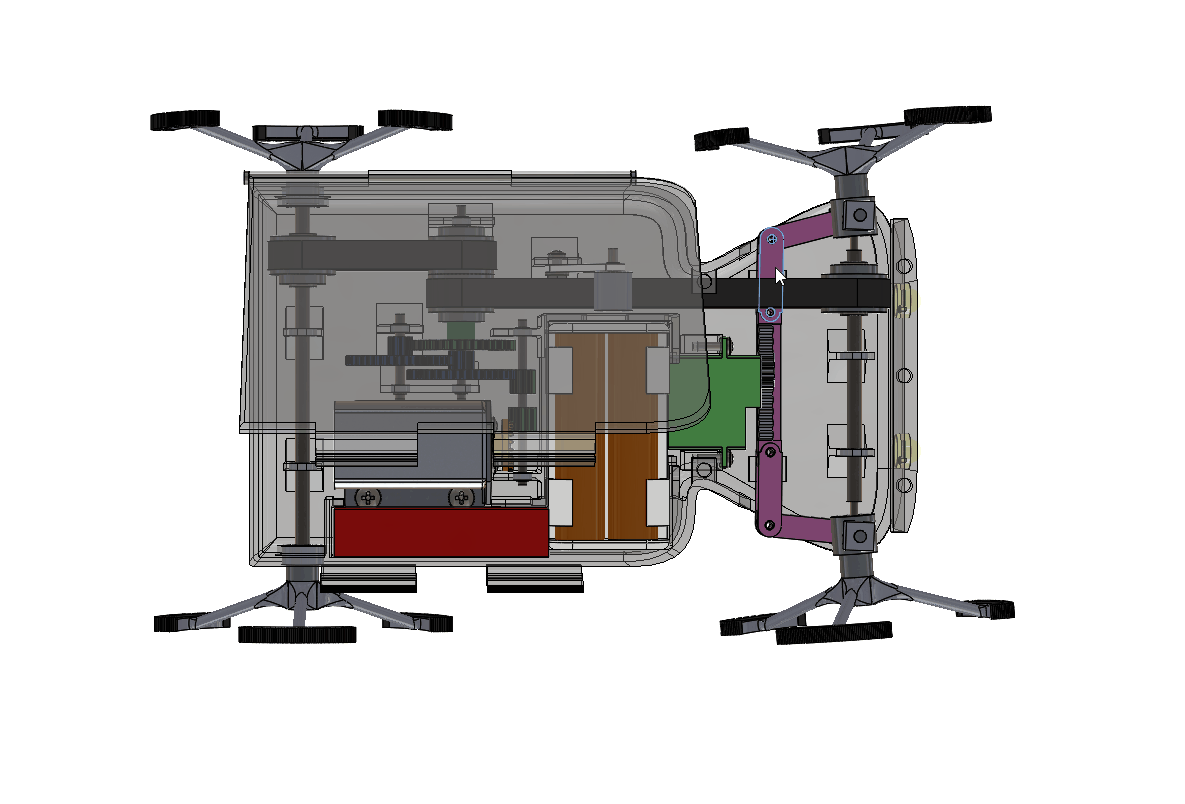
Mini-Wheg
January / March 2017
Individual Project
A mini-wheg is a small motorised vehicle that features 'whegs' (wheel - legs).
What is a mini-wheg?
Specifications
Purpose
My mini-wheg served the purpose of exploring and capturing on camera locations too remote or difficult for humans to get to, such as caves.
Find the full report here.
Ideation


I began by sketching out initial ideas and than using paper cut outs to find an arrangement of components that worked.
Component Analysis
Motor
Required tractive force:

Required Torque:

Required Motor Power:
Maximum achievable tractive force:

D
F
Fm
Fmax
FN
g
h0
P
Γ
ω
μ
Wheg diameter
Tractive force
Weight
Maximum achievable tractive force
Normal force
Acceleration due to gravity
Height of object
Motor power
Motor torque
Angular velocity
Coefficient of friction
Conclusion: Optimal wheg diameter was 65 mm with a motor of 1.79 W (after applying a 1.75 safety factor).
Gearbox

Iteration 1 took up too much space
Motor speed = 8870 RPM at nominal voltage of 3V
Desired velocity = 5 m/s
Ideal gear ratio = 60.38
Actual gear ratio = 58.4
In hindsight, a worm gear would have been much more suitable than this crown gear

Iteration 2 was more compact
Drivetrain
A suitable belt was selected using the ContiTech manual.
A tensioner arm kept the longer belt in tension. A gear ratio of 1:1 was used for the pulleys, to minimise the space taken up by the belts.

Steering

The steering mechanism involved a motor actuating a rack and pinion attached to a linkage and eventually the whegs.
A servo motor was used to actuate the steering mechanism, providing the required accuracy and range of motion.


Minimum required servo torque:

Ackerman angles were calculated to provide the necessary turning circle radius.


A cup and ball style, simplified universal joint allowing the whegs to steer whilst still rotating about the axle
Compliant Mechanism

A torsion spring allows the whegs, usually at 60 degrees out of phase with one another to come into phase when an obstacle is encountered, doubling the available torque to overcome it.
Ingress Protection

A flexible polymer barrier would complete the casing around the whegs at the attachment points shown in red.
Whegs
Iterative redesign of the whegs utilising FEA to identify failure load and stress raisers.



Shaft
The stress experienced by the shaft was calculated to select appropriate material and diameter

Free body force diagrams


Torsional shear stress:

Final values:



